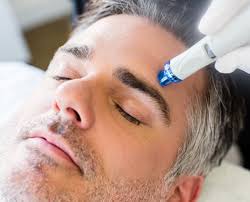Modalert is a powerful wakefulness drug that can help those with sleep disorders. It has been approved for use in the US to treat narcolepsy, sleep apnea, and idiopathic hype somnolence.
Two randomized double-blind placebo-controlled trials in patients with narcolepsy found that modafinil significantly improved subjective and objective measures of alertness.
Non-rapid eye movement (NREM) sleep arousal disorders
During the first third of sleep, a period known as the non-rapid eye movement (NREM) phase, our brains are fully awake. However, certain neurological processes remain asleep such as those that control motor function and executive functions.
Additionally, Modalert 200 Australia and Modafinil are highly effective treatments for NREM parasomnias in adults. Additionally, cognitive behavioral therapy (CBT) and mindfulness-based stress reduction (MBSR) have also been shown to be effective.
As a result, dissociated states of consciousness such as confessional arousals, sleepwalking, and night terrors can occur. The NREM parasomnias are associated with other nocturnal behaviors including sleep eating, bruxism, restless leg syndrome, and somniloquy (speaker’s voice during sleep).
NREM sleep typically begins in stage 2 or stage 3 and is characterized by slow wave activity. It is difficult to wake people up directly from this stage of sleep due to a phenomenon called “sleep inertia.”
Sleepwalking occurs during NREM phase 1 and can range in complexity from simple walking to driving an automobile. This is a common disorder that is often seen in childhood but can persist into adulthood.
Sleep arousal disorders can also be precipitated by other disorders such as obstructive sleep apnea and psychomotor restless leg syndrome (PLMS). These comorbidities have been shown to improve NREM parasomnias, and therefore, treating them may significantly reduce the frequency of nocturnal events.
Additionally, melatonin and zopiclone are highly effective treatments for NREM parasomnias in adults. Additionally, cognitive behavioral therapy (CBT) and mindfulness-based stress reduction (MBSR) have also been shown to be effective.
Sleepwalking disorder
Sleepwalking is one of several parasomnias that involve undesired behaviors and activities that occur while asleep. Modafinil online The alternative medicine is, can be used in the absence of Modalert200.
It’s also called somnambulism and is more common in children and young adults because it takes place during deep, non-REM sleep early in the night. People with this condition usually walk, but they may also do other things such as use the bathroom, dress or move furniture.
The episode usually lasts ten minutes or less but can be longer. Upon awakening, most sleepwalkers have no memory of the event or only fragments. In some cases, especially in men, episodes of sleepwalking can be violent.
This disorder typically begins in childhood and peaks between the ages of 4 and 8. It’s more common in boys than girls. Sleepwalking often has a hereditary component. It can be triggered by stress, sleep deprivation, certain medications, alcohol and caffeine, and some mental health conditions such as anxiety and depression.
Taking steps to improve sleep hygiene can help prevent or reduce sleepwalking episodes. A regular bedtime routine, avoiding stimulants and alcohol before sleeping, and using a comfortable mattress that fits your body type can help.
Cognitive behavioral therapy (CBT) to reframe negative thoughts and behavior about sleep and other aspects of life can help, as well. In addition, addressing the underlying conditions that can trigger sleepwalking, such as obstructive sleep apnea and restless leg syndrome, may help.
Rapid eye movement (REM) sleep behavior disorder
Rapid eye movement (REM) sleep behavior disorder is a parasomnia that causes you to physically act out your dreams during REM sleep.
This normally occurs only during a small portion of the night. This can lead to injury and falls. In addition, REM sleep behavior disorder is linked to neurodegenerative conditions, such as Parkinson’s disease.
Symptoms of RBD include violent arm and leg movements during REM sleep, which are usually associated with dreaming. You may also make vocal sounds. In addition, your arms and legs will feel like they are heavy or involuntarily pulled down. This behavior is usually gradual, but it can become more frequent over time.
Most people with isolated RBD will eventually develop a neurodegenerative condition, such as Parkinson’s disease or Lewy body dementia, which are called alpha-synucleinopathies. This is why RBD is considered a prodromal syndrome for these disorders.
Research suggests that RBD is related to the loss of the brain chemical orexin, which helps regulate sleep, waking, and appetite. This is thought to cause the instability of REM sleep, which leads to RBD.
Other possible causes of RBD are Type 1 narcolepsy, certain antidepressants, and some medications used to treat other diseases. These medications may interfere with orexin and can lead to RBD. However, most cases of RBD occur without a known cause.
Circadian rhythm sleep-wake disorders
Your body operates on a 24-hour sleep-wake cycle, influenced by natural light and dark, meals, exercise, hormone production, and other daily activities. Any disruption of this circadian rhythm can lead to a range of symptoms, including insomnia and excessive daytime sleepiness.
Circadian rhythm sleep-wake disorders are a group of conditions tied to dysfunctions or misalignments with your internal clock and the light-dark cycle.
Delayed sleep phase syndrome (DSPS) — also known as night owl syndrome — is characterized by difficulty falling asleep at night and sleeping in late in the morning. This can cause you to be late for work, school, or other social events and leads to a decreased ability to function during the day.
Advanced sleep phase disorder (ASPD) — also known as a morningness-eveningness syndrome — is a chronic condition that causes people to feel extreme sleepiness during the early part of the day, even when they get the amount of sleep recommended for their age and gender. It is most common in older adults and can interfere with daily functioning and relationships.
Jet lag — or international travel time zone shift disorder — is caused by an abnormal change in your normal sleep schedule when you travel across multiple time zones. It can affect anyone, from babies to elderly adults.
Circadian rhythm disorders are often linked to neurological conditions, such as dementia and Alzheimer’s disease, or brain injury or stroke. They can also be caused by certain medications and blindness, or by a lack of healthy sleep habits.




